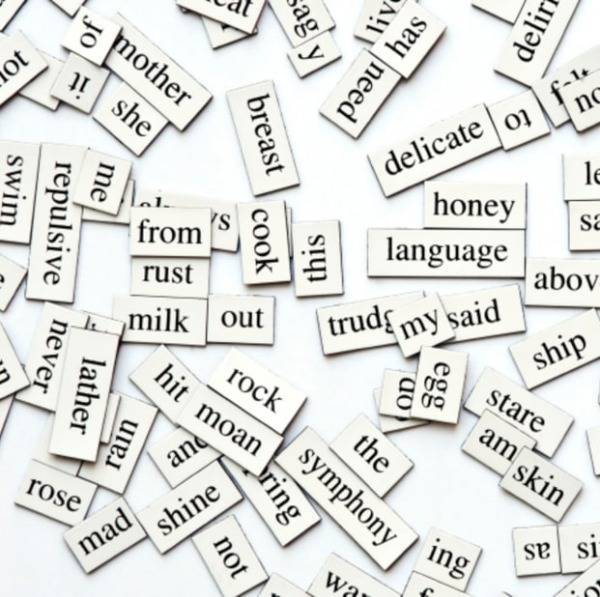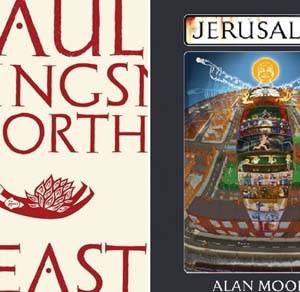
This article is a preview from the Autumn 2015 edition of New Humanist. You can find out more and subscribe here.
Jenny Diski has published ten novels, six books of non-fiction and a collection of short stories. In her essays for the London Review of Books, she has thought her way through everything from cannibalism to a biography of Denis Thatcher. Most recently, she has written a series of pieces for the LRB about her inoperable lung cancer and a memoir of going to live with the novelist Doris Lessing at the age of 15.
The essays, the most recent of which have brought Diski some fame, can be found online. But the books, particularly the novels, are elusive; it is easier to read her pieces for a Swedish newspaper than it is to find any of the fiction in a London bookshop. Despite her talent, Diski may be the most out-of-print contemporary writer there is.
Novels, non-fiction, diary, memoir, essay; Diski’s writing seems as if it might belong to different genres but it also breaks down the idea of genre itself. It is sometimes argued that a writer may be “unclassifiable” but you have to put a book somewhere in a bookshop (why not a table marked “unclassifiable”?). This idea applies to Diski’s work, a little. But all the writing is recognisably the work of a single author. In this respect only, it has a lot in common with the work of Iain Sinclair; here is another genre-crossing writer. His work is surprisingly popular, and his backlist surprisingly available, given that his sentences, unlike Diski’s, can be inelegant and the plots of the books labelled “fiction” – Downriver for instance – are often impenetrable. (See the Winter 2013 New Humanist for a discussion of Iain Sinclair’s work.)
The books by Diski that can be labelled “fiction” are the most disconcerting for anyone who is used to the first-person voice that appears in the LRB, Harper’s and Göteborgs-Posten. In the essay “A diagnosis” (11 September 2014), Diski states: “I write fiction and non-fiction, but it’s almost always personal. I start with me, and often enough end with me. I’ve never been apologetic about that, or had a sense that my writing is ‘confessional’.” It’s a typically Diskian caution – she’s going to write about her cancer, because she’s a writer, but she isn’t setting out for new emotional territory.
Apology for the Woman Writing (2008) is the most recent and, thanks to its historical setting, the most approachable novel. In form but not subject-matter, it is the furthest removed from the essay writer. The novel is based on the life of Marie de Gournay, the minor aristocrat and writer who produced the major editions of Montaigne’s Essays after his death. It is a study of masters and disciples, of readers and writers, and the point at which each term slides into the other. Some slippage, the novel seems to suggest, is unavoidable – but still undesirable.
Marie, a young woman in the provinces, who doesn’t want to marry or to become a nun, is given a copy of the first volume of Montaigne’s essays. She has taught herself Latin and is well-read enough to recognise that in front of her is a brand-new form in western literature. Montaigne arriving at his method is described in free indirect speech: “He made a decision, borne of desperation, to be led by these thoughts, to demand answers to the questions his mind put to him about himself and write them down, to make, if they might, the shape of a human being.”
When Marie meets Montaigne in Paris – he receives a letter from a young woman and hopes she might be pretty – he is disappointed by her looks and her enthusiasm for his work begins to irritate him: “there also lay an insistence that he recognise and be grateful to her, his perfect, his only true reader.” Marie has no idea how to behave and stabs herself in the arm with a hairpin to prove her readerly devotion: “The physical and mental problem of engaging with the being called the writer who was yet another person in the room was more than she knew how to manage.”
But making a scene works. Montaigne is so alarmed that he calls her his fille d’alliance, his adopted daughter of the intellect, a role Marie is eager to claim. It can’t, however, make her own writing more interesting – she writes what she thinks she should write, not what she feels is only hers to say. The result is “a menu of banalities that could whet no one’s appetite”.
Monkey’s Uncle (1994) has a contemporary setting and a more complicated premise. The main character is “a genetic researcher and former political activist” who has a breakdown in early 1990. When asked what has triggered her breakdown, Charlotte Fitzroy’s answer is: “The Berlin Wall came down and my daughter was killed.” Part of Charlotte’s mind goes down a rabbit-hole in an Alice’s Adventures in Wonderland-like journey; quotations from Alice introduce every chapter. Her guide is an orangutan called Jenny who wears a hat and a flowery dress, in whose company she meets the bickering trio of Marx, Freud and Darwin.
The saner part of Charlotte stays above ground and finds the end of history almost more unbearable than the loss of her daughter; she’s forced to live in a world where materialism has triumphed and “which for reasons that were not difficult to understand, chose to imagine itself instead, at the finale of a fairy story, where everything had turned out all right in the end.”
None of the novels have neat endings. Although there are characters who crave tidiness – the heroine of Rainforest (1987) is an anthropologist who becomes a cleaner after her breakdown – their longings reveal the wish to escape a world they have to keep on puzzling out. In the unreassuring words of Jenny the orangutan, who suggests that Charlotte stop thinking and embrace her fantastical surroundings: “All that meaning of life stuff is for the half-mad, for those clinging on to reality by their broken and bloody fingernails.”
There are a series of correspondences between the fiction and non-fiction books. Skating to Antarctica (1997) is an account of Diski’s journey around Antarctica, recollections of her childhood and finding out what happened to her mother. Mimi, the main character in The Dream Mistress (1996), shares the same family background. Both books feature a mother who carries a knife in her handbag, on the offchance of coming across the husband who has abandoned her. From essays and interviews, it turns out that Diski’s mother did so in real life.
Mimi has a corresponding dislike of intensity, though she can be carried away by other people’s, including the lover who is on the brink of leaving her. Other people, it seems to Mimi, can get too carried away by their own narratives. She is more dispassionate about herself: ‘‘In the manner of a scientific investigator she should see what happened when she told herself a different story.”
The novels can be read as a kind of scientific investigation; a testing of situations in cooler conditions than the first-person works. A virtuoso sentence in Apology for the Woman Writing shows off everything Diski can do, without drawing attention to itself. After Marie has learned, months after the fact, that Montaigne has died, she is inconsolable.
"It was catastrophic that he had died, her own life was cut off with his loss, and yet, as she lay tossing and turning on her bed, weeping and mad with grief for the father she had so briefly met, who had spent so little time with her, but who had loved and understood her as no one ever had, in that small fearful place inside her, the weight, whose existence she had hardly acknowledged, gradually but quite perceptibly began to lighten."
The clichés – “tossing and turning”, “weeping and mad with grief” – come in balanced phrases, as do the relative clauses about Montaigne. They draw out Marie’s feelings, while suggesting that she has only conventional phrases to hand. But for all the histrionics, Marie’s mood has changed from disaster to mild relief as she begins to see the possibilities her idol’s death might allow her. It is peripeteia – the turning point in a tragedy – in one sentence.
Apology for the Woman Writing is careful to portray Montaigne as an important statesman of his time – as the Mayor of Bordeaux, as a diplomat sent on sensitive missions as well as a writer. But 500 years later it’s the Montaigne who wondered whether he was playing with his cat, or his cat was playing with him, that interests us most.
Diski (some of whose most elegant writing is about animals) is a brave sceptic in a similar vein, who keeps posing Montaigne’s famous question, “What do I know?”, without giving in and settling on an answer.
Apology for the Woman Writing, Jenny Diski’s most recent novel, is published by Virago; for details of her other books, visit jennydiski.co.uk

